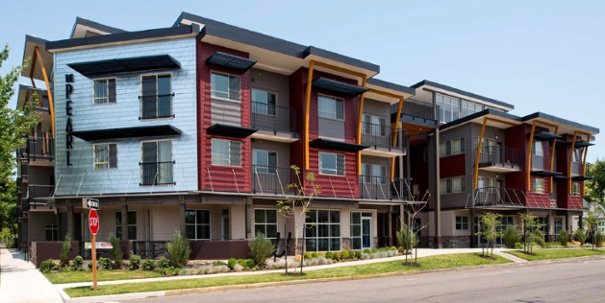
Multi-family Buildings and Ventilation
10/26/2017
In most urban areas, developers, builders, architects, and investors are scrambling to keep up with the demand for multi-family dwellings. Many renters want to be closer to their jobs, shopping, and restaurants and to have attractive amenities, although this can come at a premium. Energy-efficient multi-family buildings are growing in popularity as a way to boost comfort, reduce operating costs, and satisfy stringent building codes.
Multi-family Buildings & Ventilation
Apartment and condominium buildings are being more tightly constructed than ever before. Although this is great from an energy-efficiency standpoint, it can create indoor air quality issues. Multi-unit dwellings face unique home air quality challenges because they tend to have high occupancy densities, creating higher moisture and carbon dioxide levels. Many multi-family buildings rely on exhaust fans and natural ventilation through gaps and cracks in the building exterior for ventilation, but this has numerous drawbacks.
“Do you want air to come in through uncontrolled means, through cracks in your building enclosure, having to open a window, or coming up through a stinky cellar,” asks John Rockwell, Technical Sales Engineer for Zehnder America. “Balanced ventilation means that you exhaust stale air and moisture from kitchens and bathrooms, and it’s balanced by the supply air that comes in in a controlled way through an intentional penetration in the building, and then it’s filtered before it ever gets to the space.”
Balanced Ventilation Strategies Boost Home Air Quality
Many urban areas are plagued by pollution, security issues, and excessive noise pollution. This makes it difficult for inhabitants to use windows to ventilate the home, even when setting aside energy efficiency issues.
Zehnder heat recovery ventilators supply and exhaust equal quantities of air into the building, avoiding air from getting pulled in through gaps in the enclosure and eliminating the need for windows to ventilate the home. Because Zehnder heat recovery ventilators (HRV) and energy recovery ventilators (ERVs) run continuously to maintain ideal ventilation levels, they don’t rely on occupants remembering to turn the system on and off.
These systems help keep moisture and carbon dioxide levels in a healthy range without compromising energy efficiency. Zehnder ventilators have filters to remove smog, smoke, pollen, mold spores, bacteria, and other contaminants.
Save Energy for Lower Operating Costs
Zehnder HRV and ERV units are the most efficient systems on the market and are certified Passive House components. They transfer heat and coolness from the exhaust air to the intake air, saving energy. This innovative design saves energy in both the heating and the cooling season.
“If you bring in 0-degree winter air in northern Maine, you have to heat that air up all the way until it becomes comfortable in the space,” says Rockwell. “If you recovered 90% of the difference between the outdoor temperature and the indoor temperature, your heating system doesn’t have to do nearly as much work. And, that’s where the energy is saved in heating climates.”
Zehnder systems can also save a lot of energy in warm climates, explains Rockwell. “In cooling climates, if you’re using an ERV and reject high temperatures and a significant portion of the incoming humidity, you will lower your cooling and dehumidification requirements, saving energy. In fact, because it takes so much energy to remove moisture from the air – not just to cool it but to dehumidify it – there can be really substantial energy savings using an ERV in a multi-family building as opposed to natural ventilation.”
HRV System Layout in Multi-family Buildings
When creating a ventilation strategy for multi-unit dwellings, one large HRV or ERV unit can service several units or each apartment can have a smaller system. The later is ideal because the user can more easily boost the unit when a higher ventilation rate is needed after showering or cooking, for example.
Some buildings are designed where the ventilation units are in a common hallway or mechanical room, so property managers can access the ventilator and replace filters without having to enter the individual units.
As the demand remains strong for multi-family buildings, indoor air quality and energy efficiency are important considerations for buildings, developers, and investors. Zehnder ventilation solutions protect home air quality and lower operating costs in rental units and condominiums alike.
